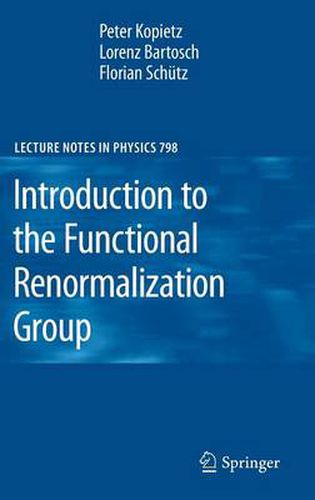Readings Newsletter
Become a Readings Member to make your shopping experience even easier.
Sign in or sign up for free!
You’re not far away from qualifying for FREE standard shipping within Australia
You’ve qualified for FREE standard shipping within Australia
The cart is loading…






This title is printed to order. This book may have been self-published. If so, we cannot guarantee the quality of the content. In the main most books will have gone through the editing process however some may not. We therefore suggest that you be aware of this before ordering this book. If in doubt check either the author or publisher’s details as we are unable to accept any returns unless they are faulty. Please contact us if you have any questions.
The renormalization group (RG) has nowadays achieved the status of a meta-theory, which is a theory about theories. The theory of the RG consists of a set of concepts and methods which can be used to understand phenomena in many different ?elds of physics, ranging from quantum ?eld theory over classical statistical mechanics to nonequilibrium phenomena. RG methods are particularly useful to understand phenomena where ?uctuations involving many different length or time scales lead to the emergence of new collective behavior in complex many-body systems. In view of the diversity of ?elds where RG methods have been successfully applied, it is not surprising that a variety of apparently different implementations of the RG idea have been proposed. Unfortunately, this makes it somewhat dif?cult for beginners to learn this technique. For example, the ?eld-theoretical formulation of the RG idea looks at the ?rst sight rather different from the RG approach pioneered by Wilson, the latter being based on the concept of the effective action which is ite- tively calculated by successive elimination of the high-energy degrees of freedom. Moreover, the Wilsonian RG idea has been implemented in many different ways, depending on the particular problem at hand, and there seems to be no canonical way of setting up the RG procedure for a given problem.
$9.00 standard shipping within Australia
FREE standard shipping within Australia for orders over $100.00
Express & International shipping calculated at checkout
This title is printed to order. This book may have been self-published. If so, we cannot guarantee the quality of the content. In the main most books will have gone through the editing process however some may not. We therefore suggest that you be aware of this before ordering this book. If in doubt check either the author or publisher’s details as we are unable to accept any returns unless they are faulty. Please contact us if you have any questions.
The renormalization group (RG) has nowadays achieved the status of a meta-theory, which is a theory about theories. The theory of the RG consists of a set of concepts and methods which can be used to understand phenomena in many different ?elds of physics, ranging from quantum ?eld theory over classical statistical mechanics to nonequilibrium phenomena. RG methods are particularly useful to understand phenomena where ?uctuations involving many different length or time scales lead to the emergence of new collective behavior in complex many-body systems. In view of the diversity of ?elds where RG methods have been successfully applied, it is not surprising that a variety of apparently different implementations of the RG idea have been proposed. Unfortunately, this makes it somewhat dif?cult for beginners to learn this technique. For example, the ?eld-theoretical formulation of the RG idea looks at the ?rst sight rather different from the RG approach pioneered by Wilson, the latter being based on the concept of the effective action which is ite- tively calculated by successive elimination of the high-energy degrees of freedom. Moreover, the Wilsonian RG idea has been implemented in many different ways, depending on the particular problem at hand, and there seems to be no canonical way of setting up the RG procedure for a given problem.